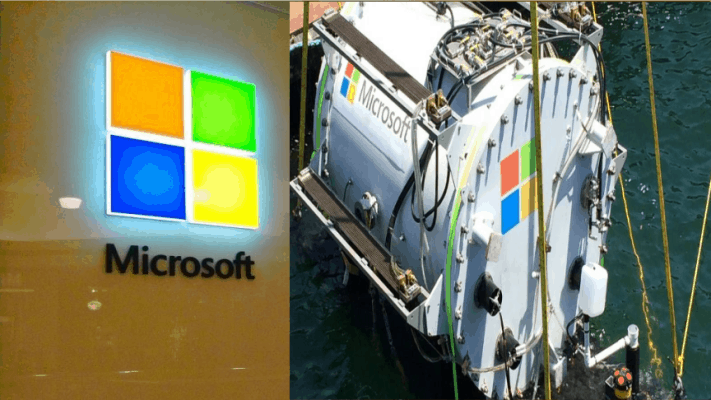The starting time of this year, the marine specialist rolled up a shipping-container-size Microsoft datacenter coated in scum, barnacles, and sea anemones from the seafloor off Scotland’s Orkney Islands underwater. The reflow launched the final phase of a long year’s effort of the team proved the concept of the underwater datacenter is logically, environmentally, and feasible practical. Microsoft finds underwater datacenter is reliable, practical and use energy sustainably
Past two years ago the Project team of Natick deployed the Northern Isles datacenter 117 feet deep to the seafloor in the spring and the next two year the team member of this project check the data center servers like tested, monitored, and the performance and reliability.
The project team of Natick guessed that a sealed container on the ocean floor could provide ways to improve the overall reliability of data centers. The team also guessed that on land, corrosion from oxygen and humidity, temperature fluctuations, etc. These are variable things and they all are caused by failure equipment. The Northern Isles deployment confirmed their hypothesis, which could have implications for data centers on land.
According to the researchers, The Project Natick is already informing conversations about how to make data centers use energy more sustainably.
The maximum world’s population lives within 120 miles of the coast. By putting datacenters underwater near coastal cities, data would have a short distance to travel, leading to fast and smooth web surfing, video streaming, and game playing.
The consistently cool subsurface seas also allow for energy-efficient data center designs.
Microsoft’s Project Natick team proved the underwater datacenter concept was feasible during a 105-day deployment in the Pacific Ocean in 2015. Phase two of the project included contracting with marine specialists in logistics, shipbuilding, and renewable energy to show that the concept is also practical.
Project Natick was partly about working out whether clusters of small underwater data centers for short-term use might be a commercial proposition, but also an attempt to learn broader lessons about energy efficiency in cloud computing.
The Northern Isles underwater data centers were manufactured by Naval Group and its subsidiary Naval Energies, experts in naval defense and marine renewable energy. Green Marine, an Orkney Island-based firm, supported Naval Group and Microsoft on the deployment, maintenance, monitoring, and retrieval of the data centers, which Microsoft’s Special Projects team operated for two years. It was also deployed by Naval European Marine Energy Centre a test site for tidal turbines and wave energy converters. Tidal currents there travel up to 9 miles per hour at peak intensity and the sea surface roils with waves that reach more than 60 feet in stormy conditions.
One of the technical team on Project Natick Spencer Fowers says, that “We have been able to run really well on what most land-based data centers consider an unreliable grid”.
Underwater datacenters might sound a really great idea, But David Ross, who has been a consultant to the data center industry for many years, says the project has great potential.
He believes organizations facing a natural disaster or a terrorist attack might find it attractive.”You could effectively move something to a more secure location without having all the huge infrastructure costs of constructing a building. It’s flexible and cost-effective.”
Microsoft is cautious about saying when an underwater data center might be a commercial product but is confident that it has proved the idea has value.
Thank you for reading. We hope this gives you a brief understanding of the latest news. Are you interested read about other latest technology-related news? Explore our Technology News blogs for more.



